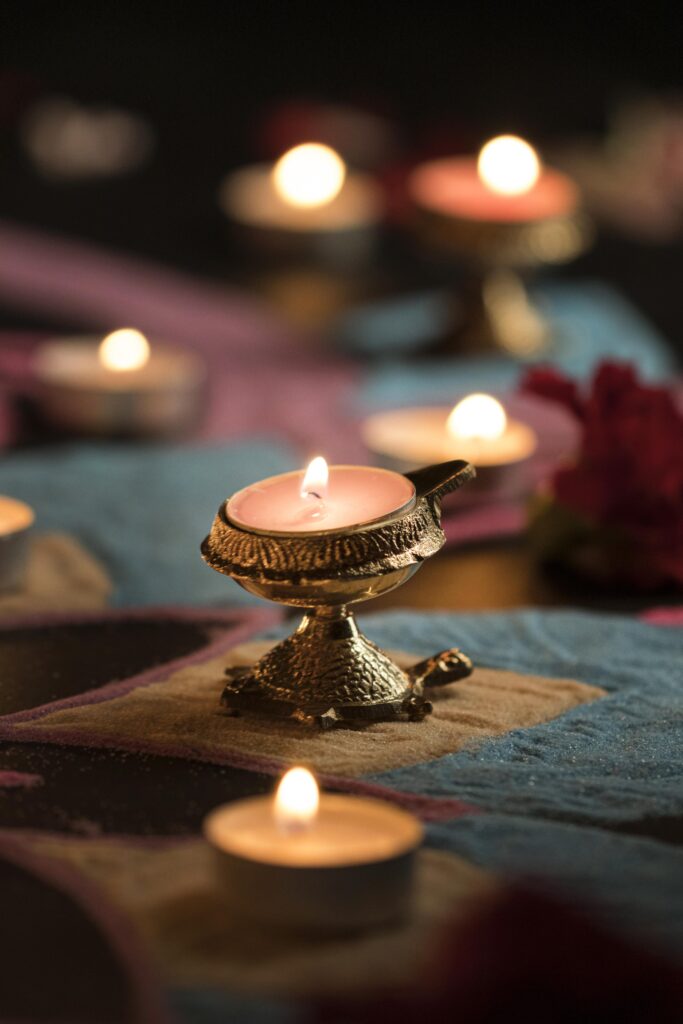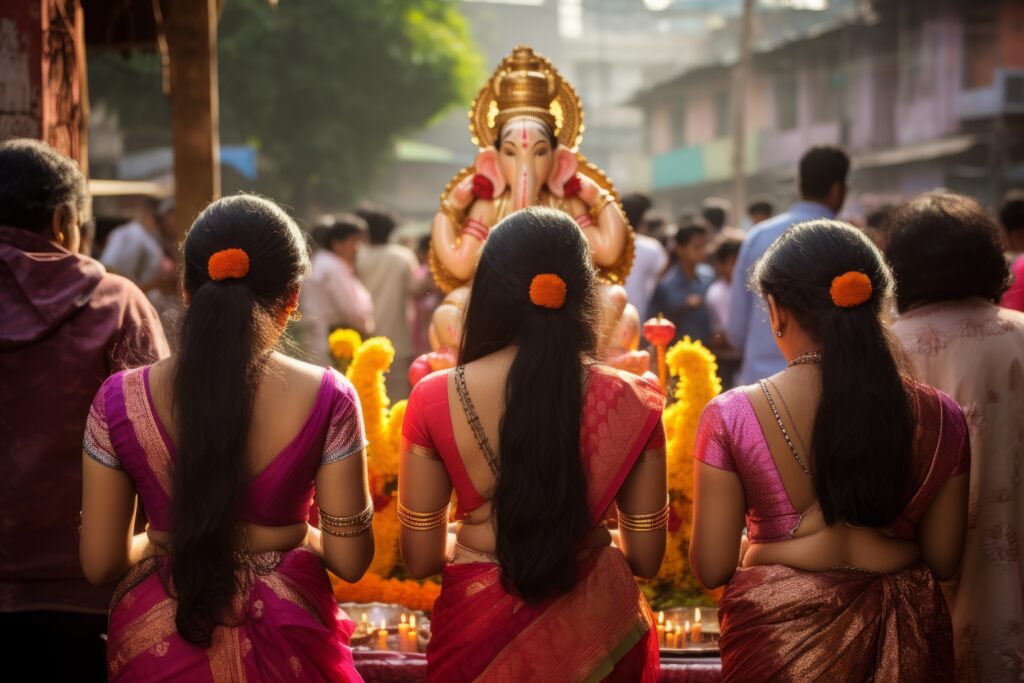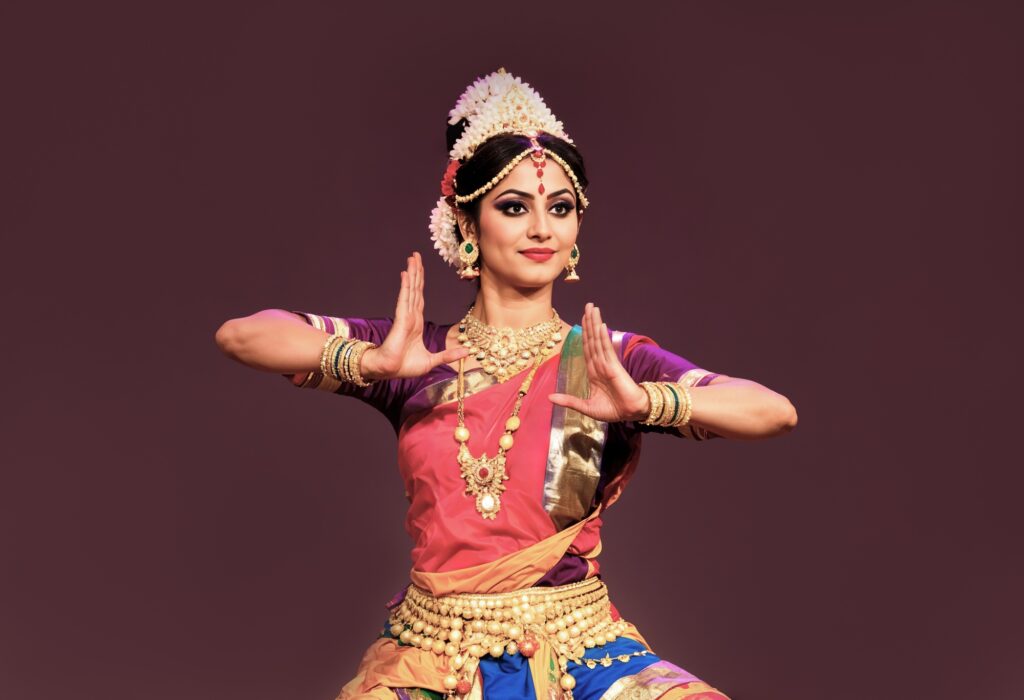
Exploring Indian festivals with cultures and rituals will be joyful. India, a land of diverse cultures and traditions, is known for its vibrant and grand festivals. These celebrations, deeply rooted in history, religion, and customs, bring people together in a spirit of joy, devotion, and unity. From the bright lights of Diwali to the colourful vibrance of Holi, each festival is a unique expression of India’s rich heritage. These festivals are marked by elaborate rituals, sumptuous feasts, and a deep sense of community.
The Significance of Indian Festivals With Cultures
Indian festivals with cultures are more than just occasions of merriment. They are deeply tied to religious beliefs, seasonal changes, historical events, and even astronomical phenomena. They serve as a means to pass down traditions from generation to generation, reinforcing cultural values and moral lessons.
The Role of Rituals in Indian Festivals
Every Indian festival with cultures involves a set of rituals that reflect the spiritual and cultural essence of the celebration. Rituals can include prayers, fasting, processions, and offerings to deities. These customs not only honour the divine but also instill discipline and devotion among people.
Major Indian Festivals With Cultures
- January: Makar Sankranti, Pongal
- February: Vasant Panchami
- March: Maha Shivaratri, Holi
- April: Ram Navami, Hanuman Jayanti, Baisakhi, Akshaya Tritiya, Gudi Padwa
- May: Buddha Purnima, Mahaveer Jayanti
- June: Ganga Dussehra
- July: Guru Purnima
- August: Raksha Bandhan, Krishna Janmashtami, Nag Panchami
- September: Ganesh Chaturthi, Onam
- October: Navratri, Durga Puja, Dussehra, Karva Chauth
- November: Diwali, Bhai Dooj, Chhath Puja
- December: Gita Jayanti
1. Diwali: The Festival of Lights
Diwali is the most Indian festival with cultures, symbolizes the victory of light over darkness and good over evil. People decorate their homes with lamps (diyas), burst firecrackers, and perform Lakshmi Puja, seeking the blessings of the goddess of wealth. The rituals associated with Diwali vary from region to region, but the essence of joy, prosperity, and togetherness remains the same.

2. Holi: The Festival and culture of Colors
Holi is one of the most vibrant Indian festivals with cultures, marked by the playful throwing of colours, singing, dancing, and feasting. It signifies the arrival of spring and the victory of good over evil, commemorating the story of Prahlad and Holika. The festival begins with Holika Dahan, a ritual where bonfires are lit to purify the surroundings. That’s why Indian festivals are the grand symphony of cultures, rituals, and unity. There are vibrant colours with Indian festivals with cultures.

3. Navratri and Durga Puja—Worshipping the Divine Feminine
Navratri, meaning ‘nine nights,’ is dedicated to Goddess Durga and is observed with fasting, dancing (Garba and Dandiya), and elaborate prayers. In Bengal, Durga Puja is celebrated with grand processions, artistic idols, and cultural performances, signifying the victory of Goddess Durga over the demon Mahishasura. its a vast Indian festivals with cultures.

4. Raksha Bandhan: The Bond of Protection
Raksha Bandhan is an Indian festival and culture the sacred bond between brothers and sisters. Sisters tie a rakhi (sacred thread) on their brother’s wrist, praying for their protection, while brothers vow to safeguard them. This festival emphasizes family values and love.
5. Ganesh Chaturthi—Welcoming Lord Ganesha
Ganesh Chaturthi is celebrated with great fervour, especially in Maharashtra. It marks the birth of Lord Ganesha, the remover of obstacles. Large processions carry beautifully crafted idols of Ganesha, which are immersed in water bodies after days of prayers and rituals. Isnt it a great Indian festivals with cultures?

6. Makar Sankranti: The Harvest Festival
Makar Sankranti signifies the transition of the sun into Capricorn and marks the end of winter. People celebrate by flying kites, taking holy dips in rivers, and preparing sweets made from sesame and jaggery. Here is another example: Indian festivals are the grand symphony of cultures, rituals, and unity. here is the so much respect in Indian Festivals With Cultures

Below is a list of major Hindu festivals celebrated throughout the year:
7. Eid: The Festival of Sacrifice and Gratitude
Eid al-Fitr and Eid al-Adha are significant Islamic festivals in India. Eid-ul-Fitr is celebrated after a month of fasting during Ramadan, while Eid-ul-Adha commemorates the willingness of Prophet Ibrahim to sacrifice his son. These festivals promote charity, family gatherings, and prayers. Indian festivals with cultures are enjoyed by both Hindus and Muslims too.
8. Christmas: Celebrating the Birth of Jesus Christ
Christmas is observed with midnight masses, carols, and festive feasts. Churches are adorned with decorations, and people exchange gifts, spreading joy and goodwill.
9.Kumbh Mela: The Biggest Festival in the World
In Indian festivals with cultures, Kumbh Mela is the largest religious gathering in the world, attracting millions of devotees, saints, and tourists. Held every 12 years at four sacred locations, this festival is a testament to the deep-rooted spiritual and cultural traditions of India. It is a time for self-purification, devotion, and the search for enlightenment.
Indian Festivals With Cultures According to the Months
The Cultural and Social Impact of Festivals
Festivals in India are not just religious events but also social celebrations that unite people across different backgrounds. They provide an opportunity for families and communities to come together, strengthening social bonds. Indian festivals are the grand symphony of cultures, rituals, and unity.
Types of Traditional Dances in India
India is home to a diverse range of traditional dances, each reflecting the culture, history, and spirituality of different regions. The classical dance forms, recognised by their strict discipline and deep-rooted connection to mythology, include Bharatanatyam from Tamil Nadu, Kathak from North India, Odissi from Odisha, Kuchipudi from Andhra Pradesh, Manipuri from Manipur, Mohiniyattam from Kerala, and Kathakali, also from Kerala. Each classical dance has its own distinct storytelling technique, involving expressive gestures (mudras), intricate footwork, and elaborate costumes. Traditional dances have a great place in Indian festivals with cultures.

Economic Influence of Festivals
Indian festivals have a significant economic impact, boosting sectors like retail, tourism, and handicrafts. From festive sales to travel and hospitality, the economic activity during these times contributes immensely to the country’s economy.
Sustainability and Changing Trends in Festival Celebrations
With growing awareness about environmental sustainability, many Indian festivals are now celebrated in eco-friendly ways. People are opting for biodegradable decorations, reducing firecracker usage, and embracing community-driven celebrations. Really, Indian festivals with cultures are awesome.
Indian Cuisine
India has a rich culinary heritage, and every festival is celebrated with special traditional dishes that reflect regional flavors and customs. Here’s a list of some iconic Indian festival dishes from different parts of the country: Traditional Indian Cuisine represents the Indian Festivals with cultures.
1. Makar Sankranti / Pongal / Lohri / Bihu
Maharashtra: Tilgul Ladoo (Sesame and Jaggery Sweets)
Tamil Nadu: Pongal (sweet and savoury rice dishes)
Punjab – Sarson da Saag & Makki di Roti, Rewri, Gajak
Assam: Pitha (Rice Cakes), Laru (Ladoos)
2. Holi
North India: Gujiya, Thandai, Malpua, Puran Poli
Rajasthan—Dahi Vada, Ghewar
Uttar Pradesh—Kanji Vada, Besan Sev
3. Navratri/Durga Puja / Dussehra
North India: Kuttu ki Puri, Sabudana Khichdi, Singhare ka Halwa
Bengal – Bhoger Khichuri, Labra (mixed veggie curry), Rasgulla
Maharashtra: Sundal, Sabudana Vada, Shrikhand
South India: Sundal (Spiced Lentils), Payasam, Vada
4. Ganesh Chaturthi
Maharashtra: Ukadiche Modak, Puran Poli, Karanji
South India: Kozhukattai (Rice Dumplings), Sundal
Gujarat: Doodhpak, Mohanthal
5. Janmashtami
North India: Makhan-Mishri, Panjiri, Chhappan Bhog
Maharashtra: Shrikhand, Gopalkala (Curd & Poha Mix)
South India: Vella Seedai, Appam
6. Onam (Kerala)
Sadya (Traditional Feast with items like Parippu Curry, Avial, Rasam, Sambar, Payasam, Pappadam, etc.)
7. Raksha Bandhan
North India: Ghewar, Seviyan Kheer, Kaju Katli
Maharashtra & Gujarat—Basundi, Puran Poli
8. Diwali
North India: Chakli, Kaju Katli, Besan Ladoo, Mathri
Maharashtra: Chivda, Shankarpali, Anarsa, Karanji
Gujarat: Ghooghra, Mohanthal, Fafda-Jalebi
South India: Mysore Pak, Murukku, Adhirasam
9. Eid-ul-Fitr/Eid-ul-Adha
Mughlai & North India: Sheer Khurma, Biryani, Haleem, Seviyan
Hyderabad—Double Ka Meetha, Nihari
10. Christmas (Christian Communities in India)
Goa & Kerala: Plum Cake, Bebinca, Kalkal, Appam & Stew
11. Baisakhi (Punjab)
Punjabi Cuisine: Chhole Bhature, Kadhi Pakora, Kheer
12. Karwa Chauth
North India: Meethi Mathri, Sargi (Dry Fruits, Pheni, Milk-based Desserts)
13. Chhath Puja (Bihar, Jharkhand, UP)
Thekua, Rasiya (Jaggery Rice Pudding), Kaddu-Bhat
Each festival in India has a deep connection with food, making celebrations more vibrant and culturally rich.
Conclusion
Indian festivals are a testament to the country’s rich cultural diversity and spiritual depth. They bring people together, create unforgettable memories, and reinforce the values of love, harmony, and gratitude. Whether through grand processions, intricate rituals, or simple acts of kindness, every festival carries a message that resonates with all.
